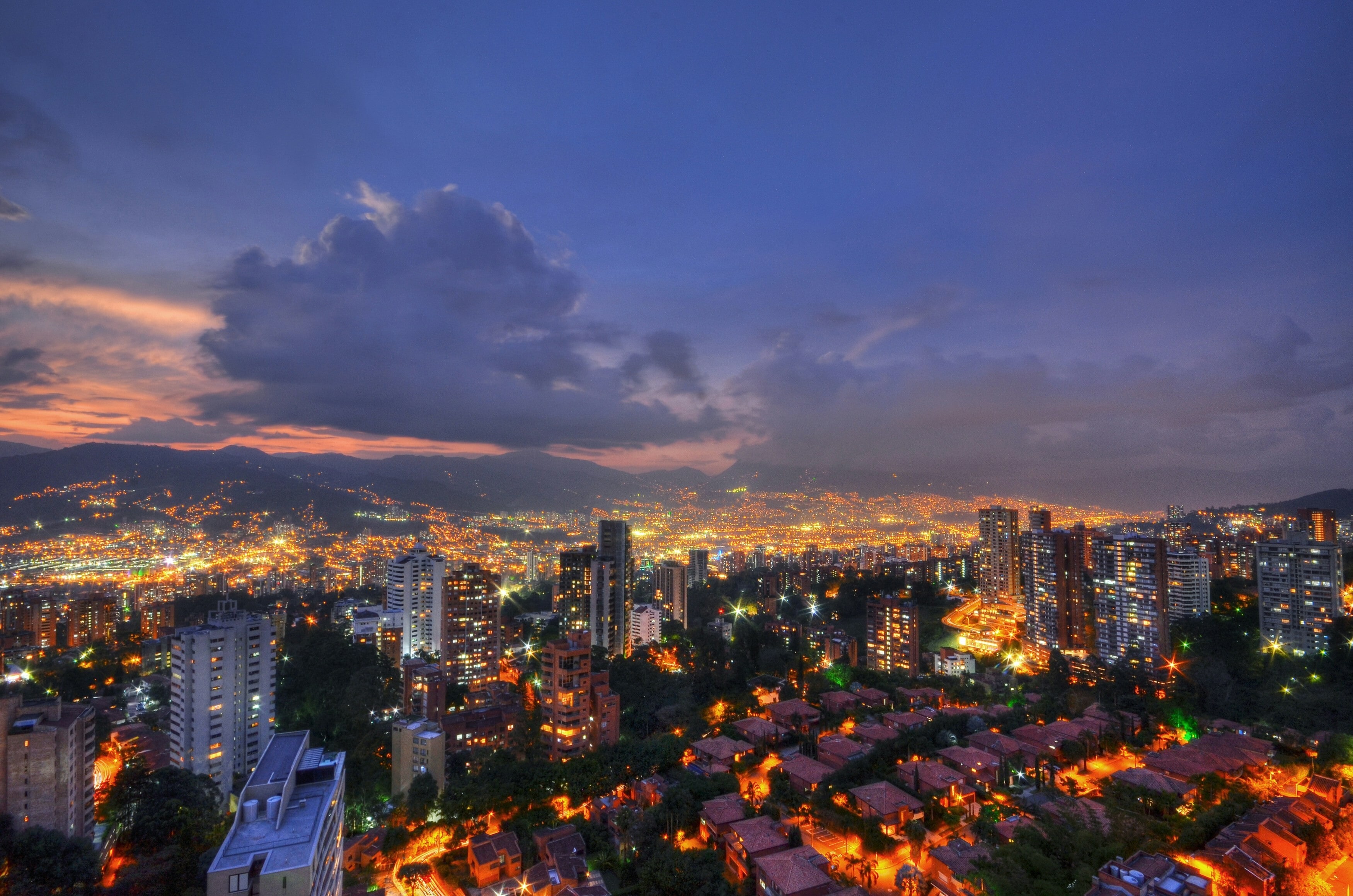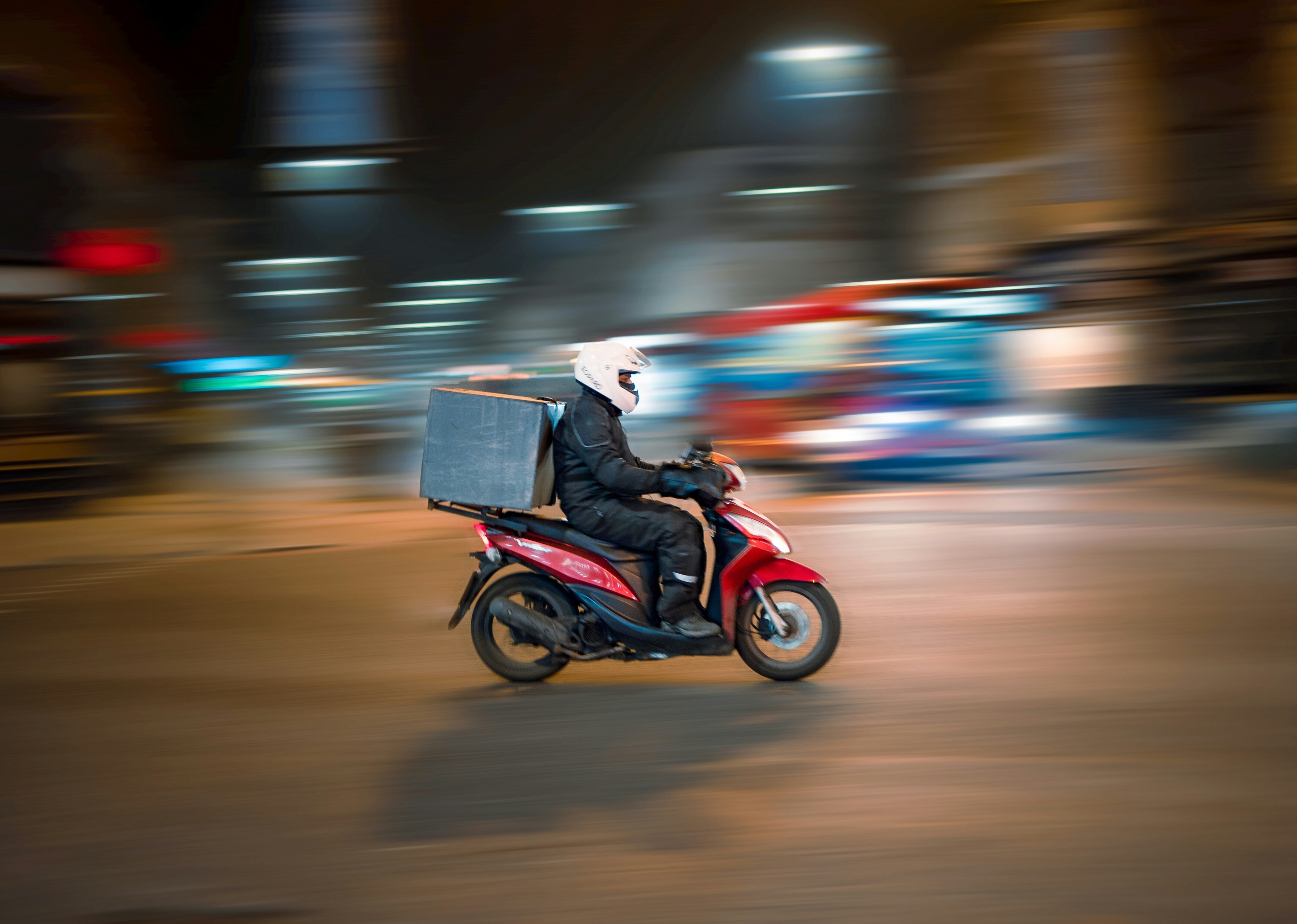The next big disruption is coming. How cities can prepare for 'flying cars'

Solutions from companies such as Uber Elevate are helping to shape new ways that people and cargo could move through the cities of the future.
Image: Uber Elevate
Explore and monitor how Mobility is affecting economies, industries and global issues
Stay up to date:
Mobility
- Urban Aerial Mobility - or 'flying cars' - could present a more flexible way for cities to invest in future infrastructure.
- Cities can help shape how this technology will be implemented and how it will impact their communities.
From ride-sharing to the COVID-19 lockdowns, cities have weathered massive changes in the past few years. These changes have altered how people got around, how they worked, and what fuelled their economies. A surprising new disruption is on its way - but this time cities have time to prepare and shape the solution that works best for their communities.
This next disruption goes by many names, but whether you call it Urban Aerial Mobility (UAM), Helicopter 2.0 or even ‘flying cars,’ this new approach to vertical takeoff and landing (VTOL) offers an infrastructure (launch pads, etc.) that’s less expensive to build than rail and a technology that’s safer and more accessible than traditional helicopters. UAM, properly implemented, could connect existing transit nodes and even make it easier for cities to connect workers to transit needs.
Flying cars, once seen as part of some space age future, are in reach. Cautious predictions from technology companies, as well as regulatory agencies, say these solutions could be in place in as soon as 5 to 10 years. But to ensure the public trusts this new option, and that it truly works for people's needs, cities must start planning now to shape standards and expectations.
Accept our marketing cookies to access this content.
These cookies are currently disabled in your browser.
To understand what’s needed, Agenda spoke with Harrison Wolf, the World Economic Forum’s Lead for Aerospace and Drones. Wolf is helping to drive the launch of a special set of principles for the urban sky to guide cities around the world. Los Angeles is set to implement these principles, and collaborations with other cities will follow. We talked to Wolf about why cities need to shape this new disruption and what’s key to keep in mind.
The following interview was edited and condensed for clarity.
Agenda: Define Urban Aerial Mobility and how it could reshape cities?
Wolf: It’s a new way of moving passengers and cargo through the sky. While we've had helicopters for a very long time, they've been just for a very small margin of society - mostly the elite. Helicopters have shown themselves to be less safe, perhaps, than other modes of aviation or transportation. It's really looking at a more sustainable combustion approach to using batteries in hybrid engines. This safer option replaces helicopters’ single point of failure rotor with a distributed electrical system to provide redundancy from the sky if something fails. So, by combining safer, more secure, more sustainable and more efficient flight, the hope is that more people can fly through the sky and can move more quickly out of gridlock and across cities.
Agenda: How is this a more sustainable option than traditional helicopter engines that readers might be familiar with?
Wolf: It's the difference between a combustion engine in a traditional car and [what you’d find in] a Prius. You reduce the carbon footprint dramatically as you introduce more hybridized, more fully electric vertical take off. Your range is a little bit diminished in the short term, but as these technologies mature and as battery density increases, you'll have a [technology that’s] much cleaner, much more efficient, and much less prone to failure, which can in turn reduce the costs of maintenance and down-time, and thus, overall costs.
Agenda: What’s the opportunity here for transit?
Wolf: Uber Elevate is one company that’s looking at the economics behind these transportation modalities. What they say is that within a period of three to five years, it may be possible to get to a price comparison with an Uber Black. So, in these very dense urban environments where an Uber would maybe take an hour to two hours, you can fly fifteen to twenty minutes and pay the same cost. All of a sudden that becomes very affordable for at least the business traveler.
I think that in the short term, much like how the car was introduced, much like air travel was introduced, it will be something that is for the middle class and business traveller. Over time, as we figure out subsidies, as we figure out how to do cost-sharing, the cost will be driven down to a point where it can become more cost competitive. Scalability will really be the key to success - if you can get to a point where it’s faster to walk to a vertiport and fly than drive (and for a similar cost), the decision will be easy. But that will take many flight options to various points throughout the city.
Agenda: Infrastructure investments were already long-delayed. How does this offer flexibility to cities?
Wolf: One of the most important elements of this is just how dynamic [UAM’s] different networks can be. A railway is linear. It takes you from A to B. It’s also a decades-long project that requires massive investment and massive capital and requires decades-long strategic planning and gambling, ostensibly, by cities. What this nodal structure can do is create a network of transportation that isn't linear, that creates points of interest from which you can navigate the city. This is somewhat revolutionary because no longer does the infrastructure developed have to be directional so much as nodal. And that's pretty interesting because then you can connect to high throughput nodes and create something complementary to the existing system. When cities change, as populations move, the routes can move in a way that trains and rail, or highway infrastructure, cannot.
So, for a city like Palmdale, California, you’ve got a suburban environment and large commuter traffic into L.A. proper, but no high-throughput options for commuters in the short-term. You need to connect populations to a more dense urban environment or suburb. What you can do is create a vertiport or create an area where this service goes, and then fly directly to an area with a metro station or even an airport. With this new approach, you’d be able to connect with a 15-minute ride to the outskirts of L.A., where you could pick up an existing rail line.
Agenda: Cities aren’t typically involved in aviation conversations. Why is that and what’s different now?
Wolf: National authorities have a full mandate for governing the skies. No one questions this. Generally speaking, aviation to date has been inter-regional. But we’re starting to see proposals for intra-city flights. Within cities, you'll see a lot more movement of goods and passengers. As that scales up, the local authorities are going to have to play a much greater role than they had previously making sure that we don't reinforce inequality or pollution over the same areas. After all, when you look at heat maps of pollution or traffic, it disproportionately affects lower socio-economic groups. So that's something that we don't want to recreate. City officials are also the most likely to get direct feedback from the community - ensuring that policy planners get that feedback and shape the transportation system to meet the needs of all should be our main concern with any new form of mobility.
Agenda: In past years, cities have watched as disruptions have come to them. Why is it important that they get ahead of these changes to come?
Wolf: It's much better to be part of the disruption than to be disrupted - for all stakeholders. We’ve seen a massive backlash against some ride-sharing apps and services. We've seen immense concern around the world for some micro-mobility solutions. And there's been a real challenge around what cities can do in terms of data collection and tougher policy planning purposes. By engaging a multi-stakeholder community from the beginning, as the World Economic Forum has supported LA in doing, policy planners, industry, and community groups can design the system in a way that is more responsive.
Agenda: This will be a new experience for many cities. What can they do to prepare?
Wolf: COVID-19 and the current economic crisis has put a strain on any city budget and we have to recognize that. I think there are three things that cities can do today to prepare for this disruptive technology. One is to identify the beneficial use cases that they could see really helping their citizenry immediately, whether that's ambulances in the sky or a medical delivery system that's designed for first responders, or whatever is culturally and locally relevant.
Agenda: How important will collaboration be?
Wolf: Cities must build up expertise and share lessons with one another, supported by industry expertise. Some cities have hundreds of millions of dollars identified for UAM. Others have no funding. But creating lesson-sharing communities, something the World Economic Forum is doing now, is something I think that really helps overcome some of the barriers that some will be facing in this challenge. Beyond that, cities will need to identify which agency internally will be responsible for beginning this process. And then cities will need to work with industry to both learn and to understand how this can be mutually beneficial. The more we work together through public partnerships, the more realistic this will be.
"It's much better to be part of the disruption than to be disrupted - for all stakeholders."
”Agenda: How will past disruptions have prepared cities for this change?
Wolf: We've seen the development of Chief Innovation Officers and Chief Sustainability Officers throughout cities as a direct result of disruption. We've seen cities invest in data analytics in a way that they hadn't ever before, and entire private public ecosystems emerging to bridge technology expertise with public policy expertise.
Agenda: What could go awry? What if there’s no preparation for the way this new technology could impact cities?
Wolf: If we don't take safety and security seriously, then society won’t trust this. The thing that matters most is that society accepts any form of new mobility or transportation. Without that trust, it won’t scale and the price will never come down. We will reinforce the same biases and inequality we see in other areas. It's important that we do this in a very thoughtful and inclusive way. We've done this poorly if it just reinforces the inequality of the helicopter, if only very wealthy VIPs are flying over congested trafficways. That's not what we're looking to do.
Accept our marketing cookies to access this content.
These cookies are currently disabled in your browser.
Don't miss any update on this topic
Create a free account and access your personalized content collection with our latest publications and analyses.
License and Republishing
World Economic Forum articles may be republished in accordance with the Creative Commons Attribution-NonCommercial-NoDerivatives 4.0 International Public License, and in accordance with our Terms of Use.
The views expressed in this article are those of the author alone and not the World Economic Forum.
Forum Stories newsletter
Bringing you weekly curated insights and analysis on the global issues that matter.
More on Urban TransformationSee all
Luis Antonio Ramirez Garcia
August 11, 2025
Michael Fröbel and Stanislas Hillen
August 8, 2025
Jeff Merritt and Vivian Brady-Phillips
July 25, 2025
Muhammad Hassan Dajana and James Balzer
July 22, 2025
Olivia Nielsen
July 16, 2025




